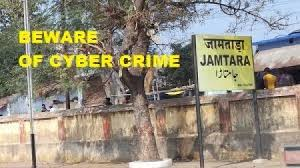In recent years, cybercrime has become a major concern for individuals and businesses alike. Jamtara, a district in Jharkhand, India, has gained notoriety for being a hub for cybercrime. Scammers from Jamtara have been able to successfully carry out a variety of online frauds, duping people across the country. In this blog post, we will discuss how these fraudsters carry out their scams.
The most common
type of cybercrime carried out by fraudsters from Jamtara involves
impersonating banks or government agencies. These fraudsters use social
engineering tactics to gain the trust of their victims. They typically call
their targets posing as bank representatives, government officials, or
employees of insurance companies. They often use a local dialect to make the
call seem more authentic.
Once the
fraudster has gained the trust of their target, they will ask for personal and
sensitive information such as bank account numbers, passwords, and credit card
details. They may also ask for a one-time password (OTP) that has been sent to
the victim's phone number, claiming that it is needed to complete a transaction
or resolve an issue with their account. The fraudster will then use this
information to siphon off money from the victim's account or make unauthorized
transactions.
Another type of
cybercrime commonly carried out by fraudsters from Jamtara is the "lottery
scam." In this type of scam, the fraudster informs the target that they
have won a lottery or prize money. The victim is then asked to provide their
bank details to transfer the winnings. Once the fraudster has access to the
victim's bank account, they will siphon off money from the account.
Spoofing phone
numbers is a common tactic used by fraudsters from Jamtara. They will use
software to change the phone number displayed on the victim's phone, making it
appear as if the call is coming from a legitimate source such as a bank or
government agency. This tactic is used to gain the trust of the victim and make
the call seem more legitimate.
Fraudsters from
Jamtara often work in call centers, which are typically located in rundown
buildings. These call centers are equipped with sophisticated software that
allows fraudsters to make calls to different parts of the country without
revealing their true location.
Cheating is
done in these ways
- ·
ATM block
- ·
Credit card reward points
- ·
Hold the electricity bill
- ·
In the name of movie rating
- ·
Work from home job
- ·
Fraud through Paytm
- ·
Nude whatsapp call
- ·
Fraud in the name of police
- ·
Fraud in the name of cheap
custom goods
- ·
Fraud through Olx
Cybercrime is a
growing threat, and fraudsters from Jamtara have become experts at carrying out
online frauds. They use social engineering tactics, spoofing phone numbers, and
impersonating legitimate organizations to gain the trust of their victims. It
is important to be aware of these scams and take steps to protect oneself from
falling prey to these fraudsters. Simple precautions such as not sharing
sensitive information with strangers and verifying the authenticity of calls
can go a long way in preventing these scams. Governments, law enforcement
agencies, and individuals must work together to combat cybercrime and protect
themselves from this growing threat.


Comments
Post a Comment